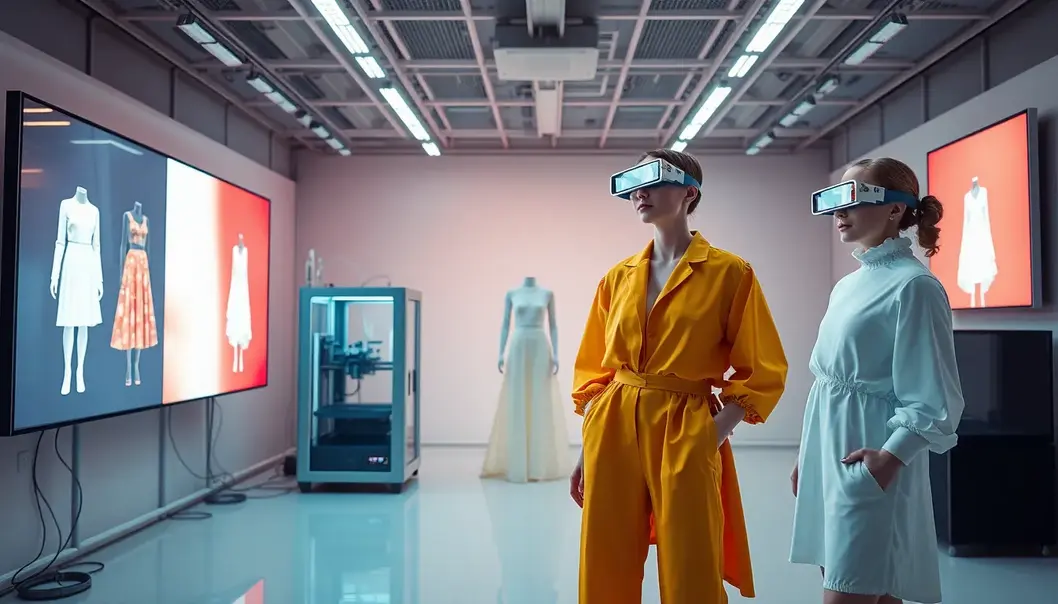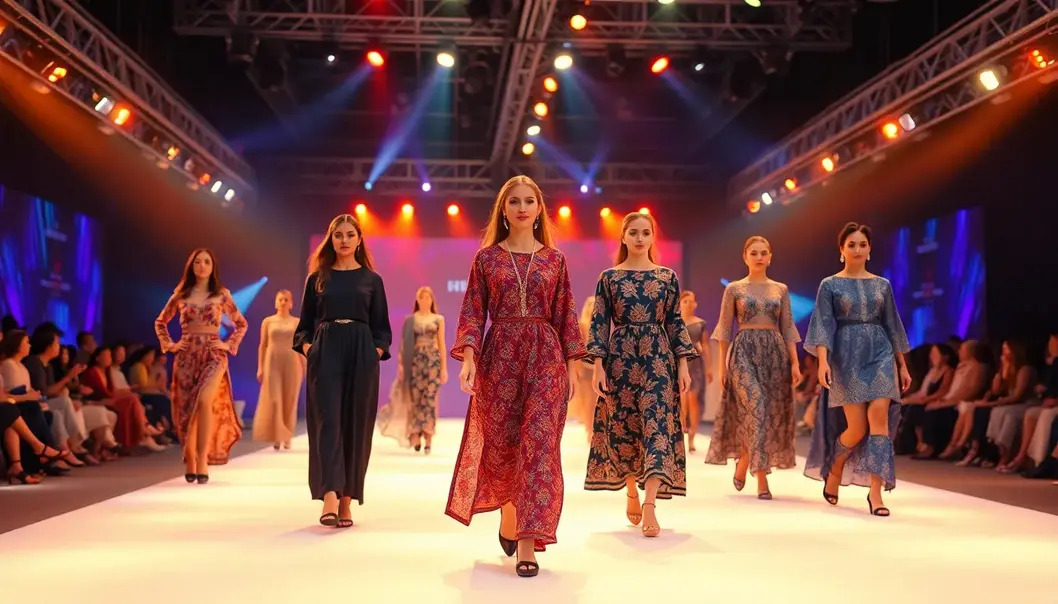Fashion lovers and trend analysts alike, brace yourselves for a journey into 2025’s sartorial landscape where creativity, technology, and sustainability converge. As the fashion industry continues to evolve, keeping pace with environmental consciousness and digital advancements, it also treasures its roots by revisiting traditional craftsmanship. This dual emphasis on innovation and heritage ensures fashion’s thriving dynamism, making it an exciting space for creative minds. This exploration will uncover key trends shaping the industry, spotlighting how they redefine style while addressing global cultural narratives. Dive in to witness how fashion’s past and future intertwine seamlessly, crafting a tapestry that’s rich with possibilities.
Resonance of Heritage: The Revival of Craftsmanship

In 2025, fashion witnessed a renaissance of heritage as designers gravitate towards traditional craftsmanship. This trend mirrors a collective desire for authenticity and ethical practices in a world increasingly dominated by mass production. The infusion of techniques, which have withstood time, into modern fashion not only revives cultural narratives but also embodies a commitment to sustainability.
Traditional handwoven textiles, for instance, are making a significant comeback. Artisans from diverse cultures bring ancient weaving techniques to the forefront, creating fabrics that tell stories of their origins. These textiles, often made from sustainably sourced materials, reduce the ecological footprint of fashion. This approach addresses growing consumer demand for eco-friendly products without compromising on style or quality.
Artisanal dyeing techniques are another focal point. Ancient methods such as indigo dyeing and batik are celebrated for their vibrant colors and intricate patterns. These techniques are cherished for their minimal environmental impact, using natural dyes derived from plants and minerals. The unique imperfections of hand-dyed fabrics add an element of exclusivity, aligning with the modern consumer’s pursuit of unique, one-of-a-kind pieces.
Bespoke tailoring, a hallmark of sartorial elegance, is experiencing a resurgence. With a focus on precision and individual fit, this craft emphasizes quality over quantity. Tailors employ age-old skills that celebrate personal expression and craftsmanship, offering an antidote to the anonymity of mass-produced garments. Bespoke pieces are crafted with care, maintaining cultural craftsmanship and creating a personal bond between the garment and its wearer.
The cultural significance of reviving these artisanal practices cannot be overstated. They serve as a bridge between past and present, connecting consumers to their heritage and offering a sense of identity and continuity. This shift is not solely aesthetic but profoundly meaningful, preserving crafts that might otherwise vanish in a rapidly changing world.
Furthermore, the revival of craftsmanship aligns with the ethical considerations at the heart of modern consumerism. Shoppers today actively seek brands that offer transparency, fair labor practices, and environmental responsibility. Embracing traditional craftsmanship satisfies these expectations by fostering sustainability and fair compensation for artisans.
In summary, the remediation of heritage craftsmanship in the fashion industry serves dual purposes: it honors cultural traditions and meets the modern demands of sustainability and authenticity. This harmonious blend of the old and new sets the stage for a fashion future that is rich in both style and substance, championing a world where creativity thrives on the foundations of tradition.
Digital Couture: Where Technology Meets Creativity

As we step into the fashion landscape of 2025, the fusion of technology and creativity is crafting a new paradigm—Digital Couture. Among the innovations leading this charge is 3D printing, transforming not only the aesthetic possibilities of garments but also the logistics of production. This technology enables designers to experiment with complex geometric patterns and textures previously unattainable by traditional means. The accuracy and efficiency of 3D printing minimize waste, aligning with the fashion industry’s sustainability goals by preserving resources and reducing carbon footprints.
Virtual fashion shows have also emerged as a landmark development, revolutionizing how designers present their collections. These digital experiences transport audiences into immersive environments where the limitations of physical space dissipate. Fashion houses can now reach global audiences with minimal environmental impact, bypassing the need for transportation and infrastructure required by traditional shows.
In the consumer realm, augmented reality (AR) is redefining fashion retail by offering interactive, personalized experiences. Customers can virtually try on garments, exploring how each piece fits into their wardrobe before purchasing. This technology not only enhances customer engagement but also significantly reduces the frequency of returns, contributing to more sustainable practices in commerce.
These digital design tools unleash creativity across the fashion sector. Designers gain the ability to sketch digitally with precision, adapting styles in real time and tailoring creations to unique customer specifications. This personalization trend is set to redefine luxury, making custom-fit garments more accessible and desirable.
The integration of technology does more than innovate design and production—it reshapes the industry’s future sustainability. By harnessing these advancements, fashion is poised to reduce its ecological footprint and appeal to a growing base of environmentally-conscious consumers. Such changes also elevate customer engagement, as interactions with brands become more dynamic and participatory, fostering a deeper connection rooted in the blend of innovation and art.
The digital couture movement highlights a vibrant conversation between tradition and modernity, reminiscent of the traditional craftsmanship revival discussed previously. Here, the nexus of technology and creativity not only redefines style but also offers a glimpse into a future where fashion’s potential is limitless, inclusive, and sustainably aware.
Final words
The fashion trends of 2025 offer an exciting blend of past and future, where the charm of traditional craftsmanship meets cutting-edge technology. This synergy assures a fashion industry that’s not only innovative but also profoundly connected to its cultural roots. As designers and brands explore these avenues, they also pave the way to a more inclusive, sustainable, and vibrant fashion landscape. Fashion lovers and trend analysts have much to look forward to as these trends unfold, offering insights into the potential directions and diversity in style.
Explore the future of fashion with our trend analysis reports. Stay ahead with insights into 2025’s evolving style landscape.
Learn more: https://fashioninsights.com/2025-trends
About us
Fashion Insights offers cutting-edge fashion industry analyses and trend reports, helping designers, retailers, and enthusiasts navigate the dynamic world of style with confidence.

